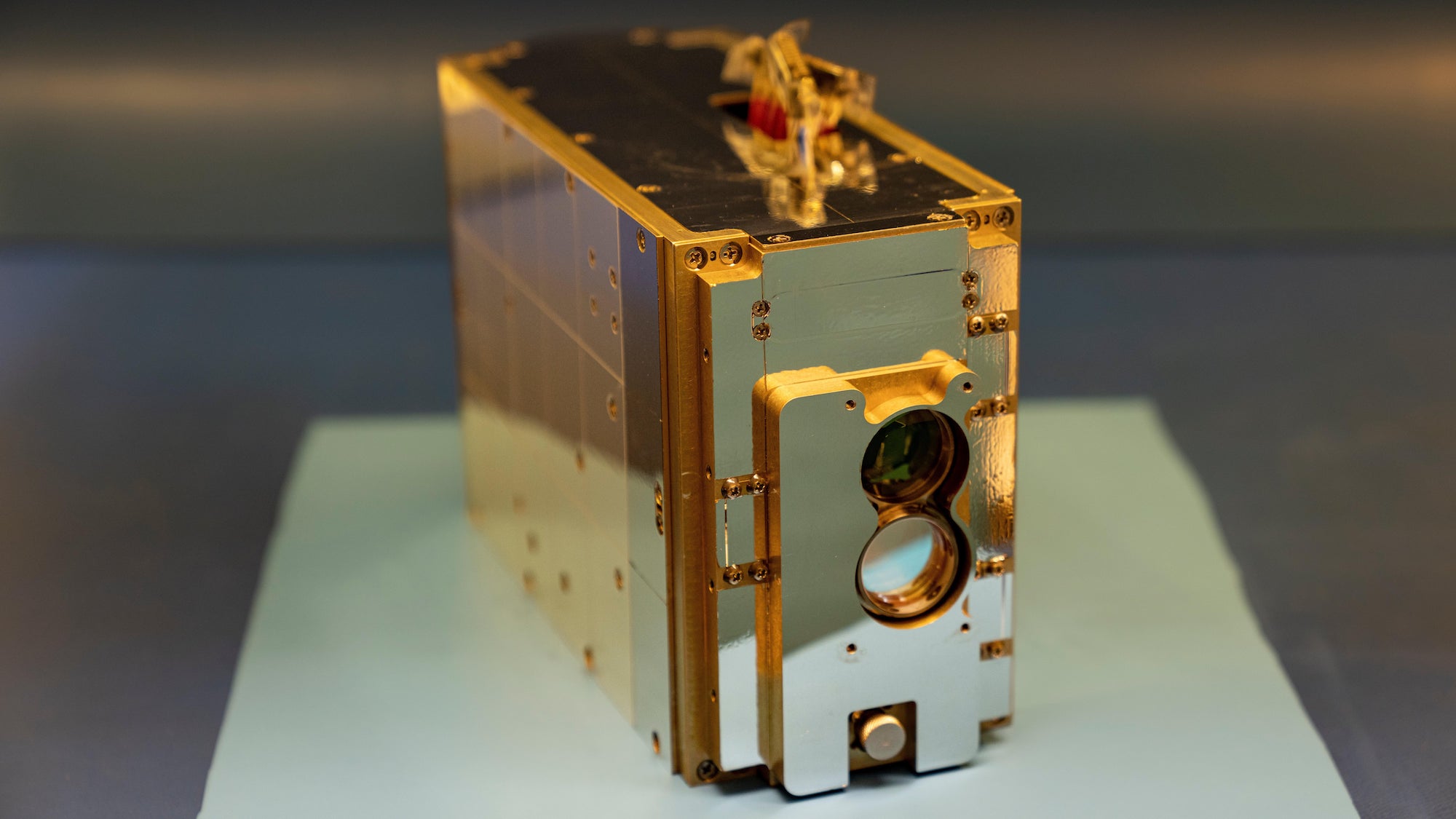

A golden, tissue box-sized satellite has set a new record for the fastest data transfer rate ever achieved by orbital laser light communications—breaking its own previous milestone set less than a year ago. According to a recent announcement from NASA, the agency’s TeraByte InfraRed Delivery (TBIRD) system achieved a 200 gigabit per second (Gbps) space-to-ground optical link speed on April 28 during a six-minute pass high above its corresponding ground station.
Within that time frame, NASA estimates TBIRD can transmit multiple terabytes of test data back to Earth. That’s equivalent to thousands of hours of HD video data. “This capability will change the way we communicate in space,” said Beth Keer, TBIRD’s mission manager at the Goddard Space Flight Center in Maryland.
[Related: NASA’s newest office is all about putting humans on Mars.]
Since 1958, radio waves have transmitted the majority of all space communications via the Deep Space Network, a global antenna array capable of sending and receiving information for satellites and astronaut crews. As NASA explains, switching to “ultra-high-speed” optical communications crams more data into each lasers’ infrared light waves that are invisible to the naked eye. This alternative—as showcased in TBIRD’s recent record breaking demonstrations—will prove vital to future space research and exploration, particularly as humans look to return to the moon, and eventually attempt to make their way to Mars.

The TBIRD system was first delivered into space last year via NASA’s Pathfinder Technology Demonstrator 3 (PTD-3) as a tiny satellite (also known as a CubeSat) roughly the size of two stacked cereal boxes. CubeSats are popular for both their relative simplicity and cost-effectiveness. After launching aboard SpaceX’s Transporter-5 rideshare mission in May 2022, PTD-3 synchronized with the Earth’s solar orbit so that the CubeSat entered a “fixed” position relative to the sun. Once established, the TBIRD satellite could begin transmitting data twice a day as it passed over its space-to-ground command center link. Within less than a year, its capabilities have broken records twice over.
[Related: This tiny, trailblazing satellite is taking on a big moon mission.]
“Just imagine the power of space science instruments when they can be designed to fully take advantage of the advancements in detector speeds and sensitivities, furthering what artificial intelligence can do with huge amounts of data,” Kerr added. “Laser communications is the missing link that will enable the science discoveries of the future.”
